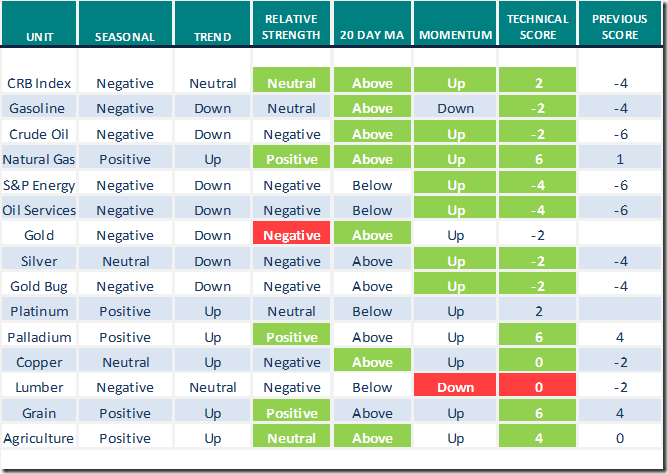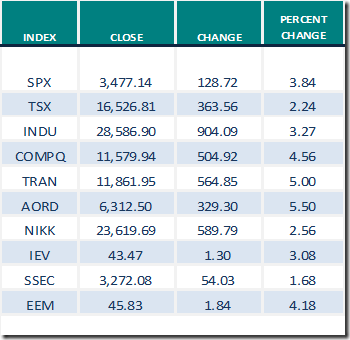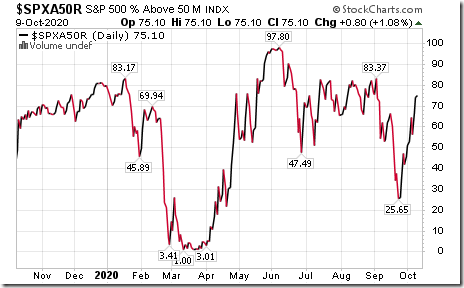by Don Vialoux, EquityClock.com
The Bottom Line
Most major equity indices around the world mostly moved higher last week. Greatest influences remain growing evidence of a second wave of the coronavirus (negative) and possible approval of a vaccine (positive). Momentum indicators for North American equity markets increased again last week from intermediate neutral to intermediate overbought levels. The VIX Index remained elevated and frequently reaches a seasonal peak this week. Weakest five week period in the year for most equity market indices around the world is between mid-September and the third week in October (particularly the TSX Composite Index and U.S. equity indices during U.S. Presidential election years). Look for continuation of volatile, choppy North American equity markets until at least U.S. Presidential Election Day on November 3rd.
Observations
The VIX Index (better known as the Fear Index) showing volatility by the S&P 500 Index remained elevated last week.
Ditto for VXN showing volatility by the NASDAQ 100 Index
The Dow Jones Industrial Average and S&P 500 Index during U.S. Presidential Election years are following their historic trend. They move lower from early September to the third week of October followed by a move higher after the election.
David Chapman’s recent Technical Scoop offers a valuable study on performance of the Dow Jones Industrial Average showing the “New President Effect”. (i.e. Performance of the Average since 1952 from Presidential Election day on the first Tuesday in November to Inauguration Day in the third week in January). The study shows that the Average rose in 11 of the past 17 periods. Note that the Average dropped substantially (i.e. 17.4%) on only one occasion, the period that Obama first became President in November 2008 just after the U.S. monetary crisis. Obama’s election promises to raise corporate and personal tax rates further aggravated U.S. stock market sentiment between November 4th 2008 and January 20th 2009 and U.S. equity markets responded accordingly. Now, Biden is promising higher corporate and personal tax rates (including an increase in the tax rate on capital gains) if elected. Caveat Emptor! Following is a link to David’s study:
The TSX Composite Index also is following its seasonal pattern this year. History shows the Index moving lower on a real basis from the beginning of September to the third week of October. On a relative basis, the Index moves lower from the beginning of September to mid-December.
S&P/TSX Composite Index Seasonal Chart
Seasonal influences turned positive on schedule on a real and relative basis near the end of September for the Shanghai Composite Index, the Hang Seng Index, DAX Index, Australia Ordinaries Index, CAC Index, London FT Index, Emerging Markets Index (and related ETFs). All indices recorded significant gains on schedule last week.
.
Favourable seasonality for the Canadian and U.S. technology sectors and related ETFs turned positive on schedule this year on a real and relative basis starting near the end of September.
Technology stocks and related ETFs (e.g. XIT.TO and XLK) recorded significant gains last week.
Favourable seasonality for grain prices (Wheat, Corn and Soybeans), Agribusiness equities and related ETFs turned positive on schedule this year near the end of September. Grain prices and related exchange traded notes recorded greater gains than the S&P 500 Index and Dow Jones Industrial Average. On Friday, the Agribusiness ETF in the U.S.: MOO broke to an all-time high.
Favourable seasonality for the Dow Jones Transportation Average and its related ETF, IYT turned positive on schedule this year near the end of September. The Average and its ETF broke to an all-time high on Friday.
Dow Jones Transportation Average Seasonal Chart
Medium term technical indicator for U.S. equity markets (e.g. Percent of S&P 500 stocks trading above their 50 day moving average) moved higher again last week. It changed from intermediate neutral to intermediate overbought. See Barometer chart at the end of this report.
Medium term technical indicator for Canadian equity markets also moved higher last week It changed from intermediate neutral to intermediate overbought. See Barometer chart at the end of this report.
Short term short term momentum indicators for U.S. markets/commodities/sectors (20 day moving averages, short term momentum indicators) increased again last week.
Short term momentum indicators for Canadian markets/sectors also increased last week.
Year-over-year 2020 consensus earnings and revenue declines by S&P 500 companies ebbed slightly again last west. According to www.FactSet.com, third quarter earnings are expected to fall 20.5% (versus previous decline of 21.0%) and revenues are expected to slip 3.6%. Fourth quarter earnings are expected to drop 12.4% (versus previous decline of 12.7%) and revenues are expected to decline 1.1%. Earnings for all of 2020 are expected to fall 17.7% (versus previous decline of 18.0%) and revenues are expected to decline 2.6%. ( versus previous decline of 2.7%)
Consensus estimates for earnings and revenues by S&P 500 companies turn positive on a year-over-year basis in the first quarter of 2021. According to FactSet, earnings in the first quarter of 2021 are expected to increase 12.8% (versus previous 12.6% increase) and revenues are expected to increase 3.1%. Earnings in the second quarter are expected to increase 44.0% (versus previous increase of 43.8%) and revenues are expected to increase 13.7%. Earnings for all of 2021 are expected to increase 25.5% (versus previous increase of 25.7%) and revenues are expected to increase 8.0%.
Economic News This Week
Monday is Thanksgiving Day in Canada and Columbus Day in the U.S.. Canadian equity markets are closed. U.S. equity markets are open, but banks are closed. Trading volumes will be lower than average.
September U.S. Consumer Price Index to be released at 8:30 AM EDT on Tuesday is expected to increase 0.2% versus a gain of 0.4% in August. Excluding food and energy, September U.S. Consumer Price Index is expected to increase 0.2% versus 0.4% in August.
September U.S. Producer Price Index to be released at 8:30 AM EDT on Wednesday is expected to increase 0.2% versus a gain of 0.3% in August. Excluding food and energy, September U.S. Producer Price Index is expected to increase 0.9% versus a gain of 0.6% in August.
October New York Manufacturing Survey to be released at 8:30 AM EDT on Thursday is expected to be 15.00 versus 17.00 in September.
October Philly Fed to be released at 8:30 AM EDT on Thursday is expected to remain unchanged from September at 15.00.
September U.S. Retail Sales to be released at 8:30 AM EDT on Friday are expected to increase 0.6% versus a gain of 0.6% in August. Excluding auto sales, September U.S. Retail Sales are expected to increase 0.4% versus a gain of 0.7% in August.
September U.S. Capacity Utilization to be released at 9:15 AM EDT on Friday is expected to increase to 71.9 from 71.4 in August. September Industrial Production is expected to increase 0.6% versus a gain of 0.04% in August.
October Michigan Consumer Sentiment to be released at 10:00 AM EDT on Friday is expected to increase to 81.0 from 80.4 in September.
Selected Earnings News This Week
Thirty S&P 500 companies (including six Dow Jones Industrial Average companies) are scheduled to release quarterly results this week. Focus this week is reports by U.S. financials.
Trader’s Corner
Seasonal/Technical Equity Trends since October 5th 2020
Green: Increase from previous day
Red: Decrease from previous day
Commodities
Seasonal/Technical Commodities Trends since October 5th 2020
Green: Increase from previous day
Red: Decrease from previous day
Sectors
Seasonal/Technical Sector Trends since October 5th 2020
Green: Increase from previous day
Red: Decrease from previous day
Technical Scores
Calculated as follows:
Intermediate Uptrend based on at least 20 trading days: Score 2
(Higher highs and higher lows)
Intermediate Neutral trend: Score 0
(Not up or down)
Intermediate Downtrend: Score -2
(Lower highs and lower lows)
Outperformance relative to the S&P 500 Index: Score: 2
Neutral Performance relative to the S&P 500 Index: 0
Underperformance relative to the S&P 500 Index: Score –2
Above 20 day moving average: Score 1
At 20 day moving average: Score: 0
Below 20 day moving average: –1
Up trending momentum indicators (Daily Stochastics, RSI and MACD): 1
Mixed momentum indicators: 0
Down trending momentum indicators: –1
Technical scores range from -6 to +6. Technical buy signals based on the above guidelines start when a security advances to at least 0.0, but preferably 2.0 or higher. Technical sell/short signals start when a security descends to 0, but preferably -2.0 or lower.
Long positions require maintaining a technical score of -2.0 or higher. Conversely, a short position requires maintaining a technical score of +2.0 or lower
Changes Last Week
S&P 500 Momentum Barometer
The Barometer increased 21.90 last week to 75.01. It changed from intermediate neutral to intermediate overbought on a recovery above 60.00
TSX Momentum Barometer
The Barometer increased 14.51 last week to 60.56. It changed from intermediate neutral to intermediate overbought on an extended recovery above 60.00.
Disclaimer: Seasonality and technical ratings offered in this report and at
www.equityclock.com are for information only. They should not be considered as advice to purchase or to sell mentioned securities. Data offered in this report is believed to be accurate, but is not guaranteed
This post was originally publised at Vialoux's Tech Talk.






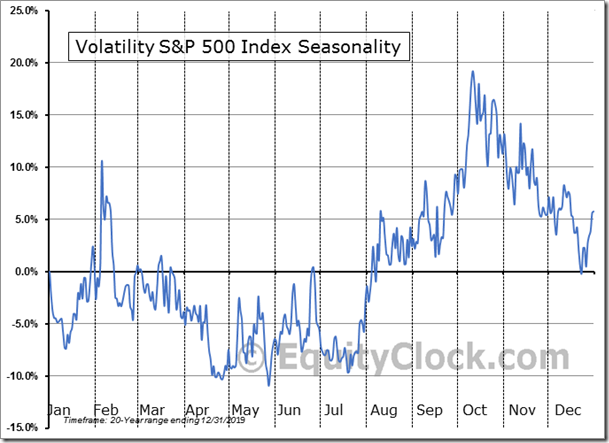
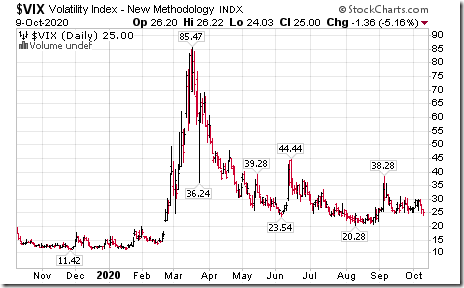

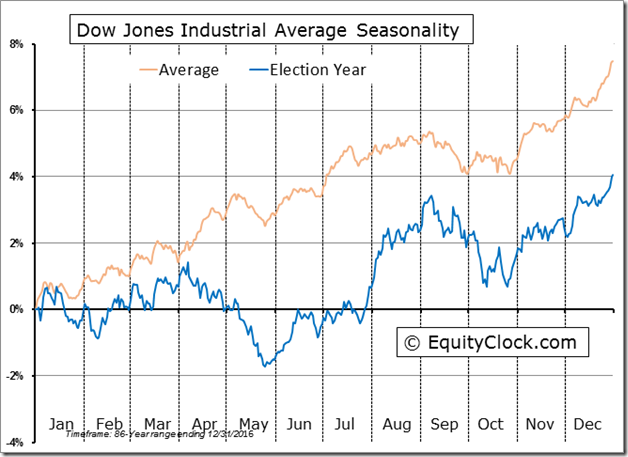



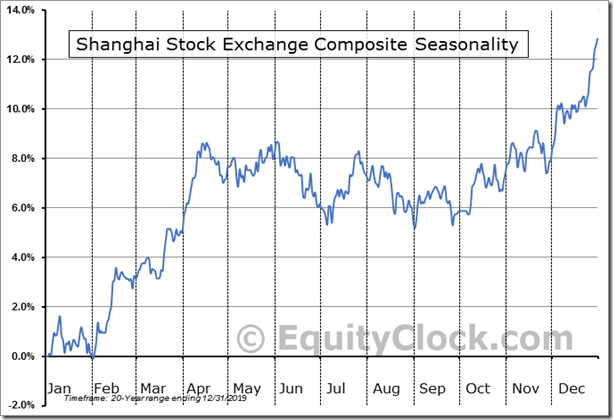
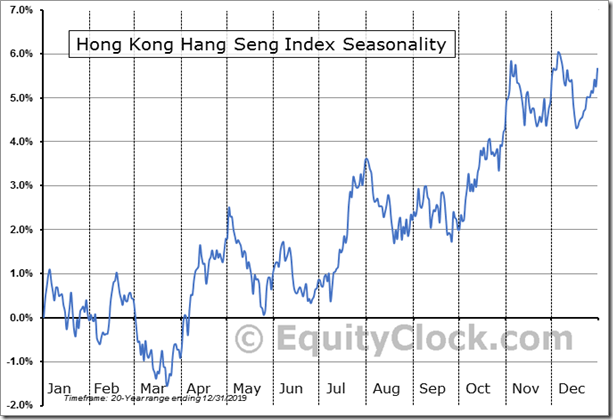
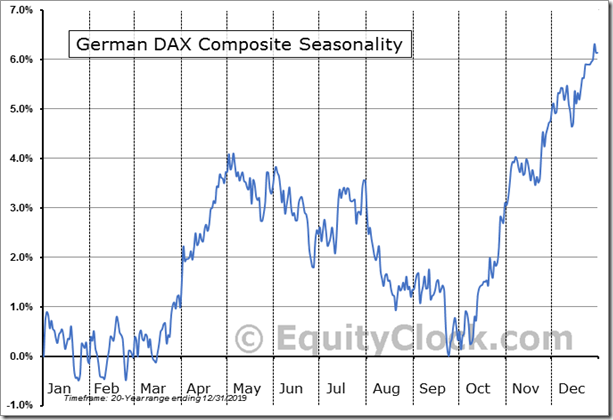
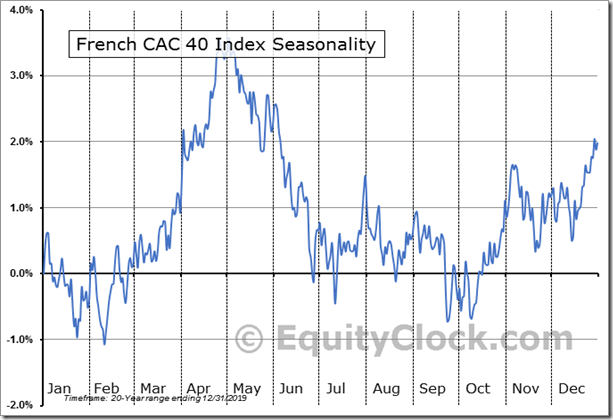

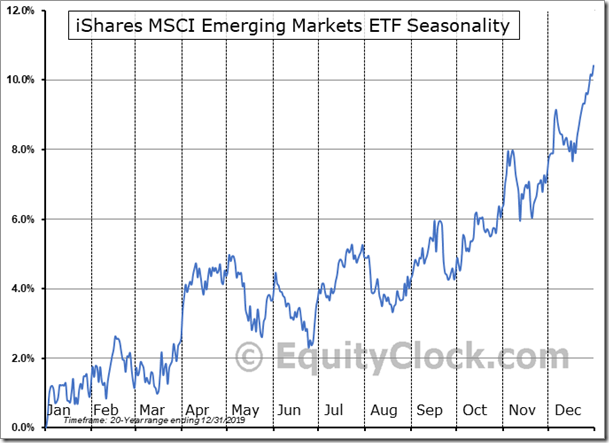
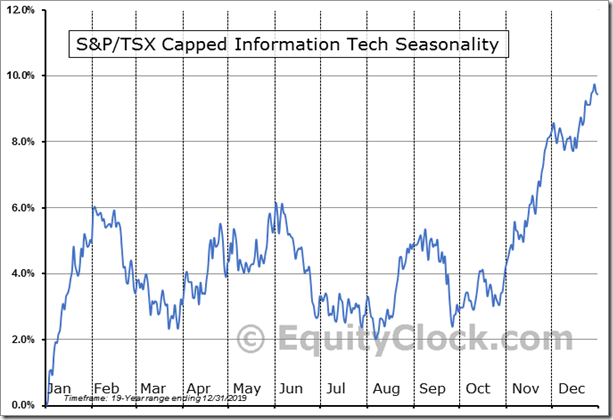
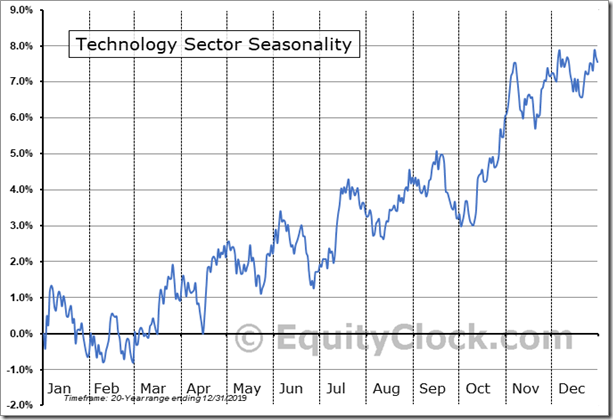
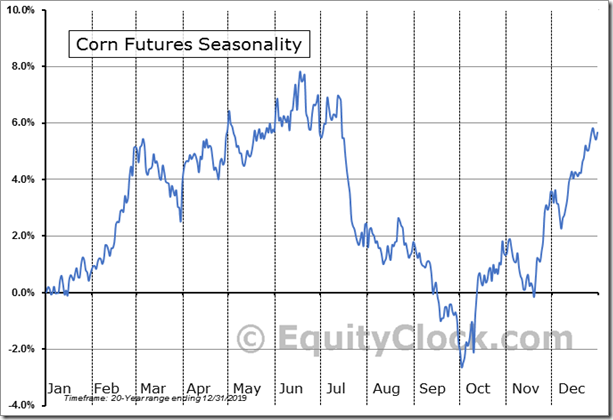
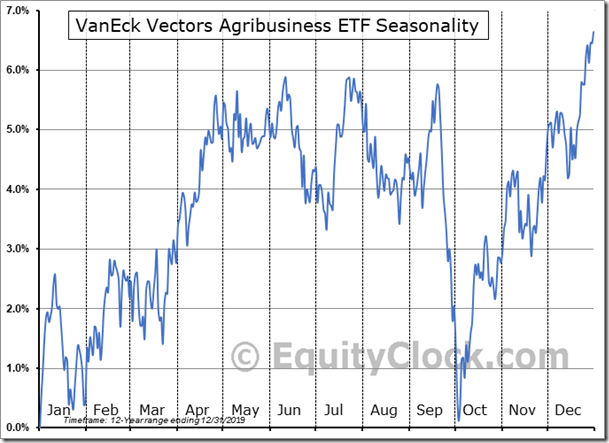
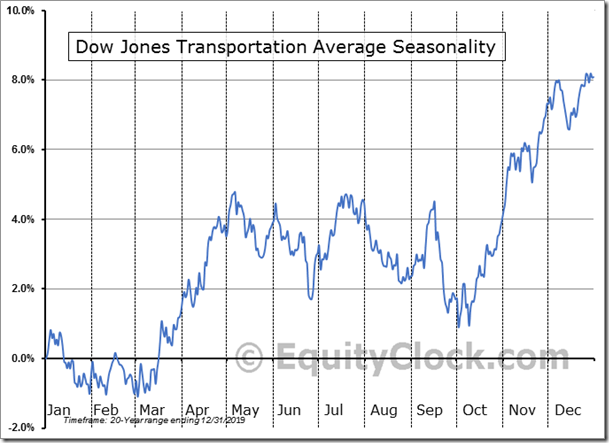


![clip_image002[5] clip_image002[5]](https://advisoranalyst.com/wp-content/uploads/2020/10/clip_image0025_thumb-1.png)
